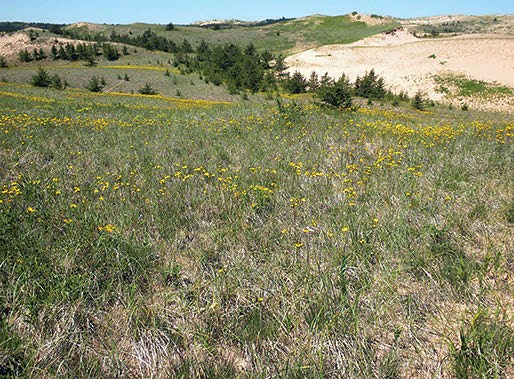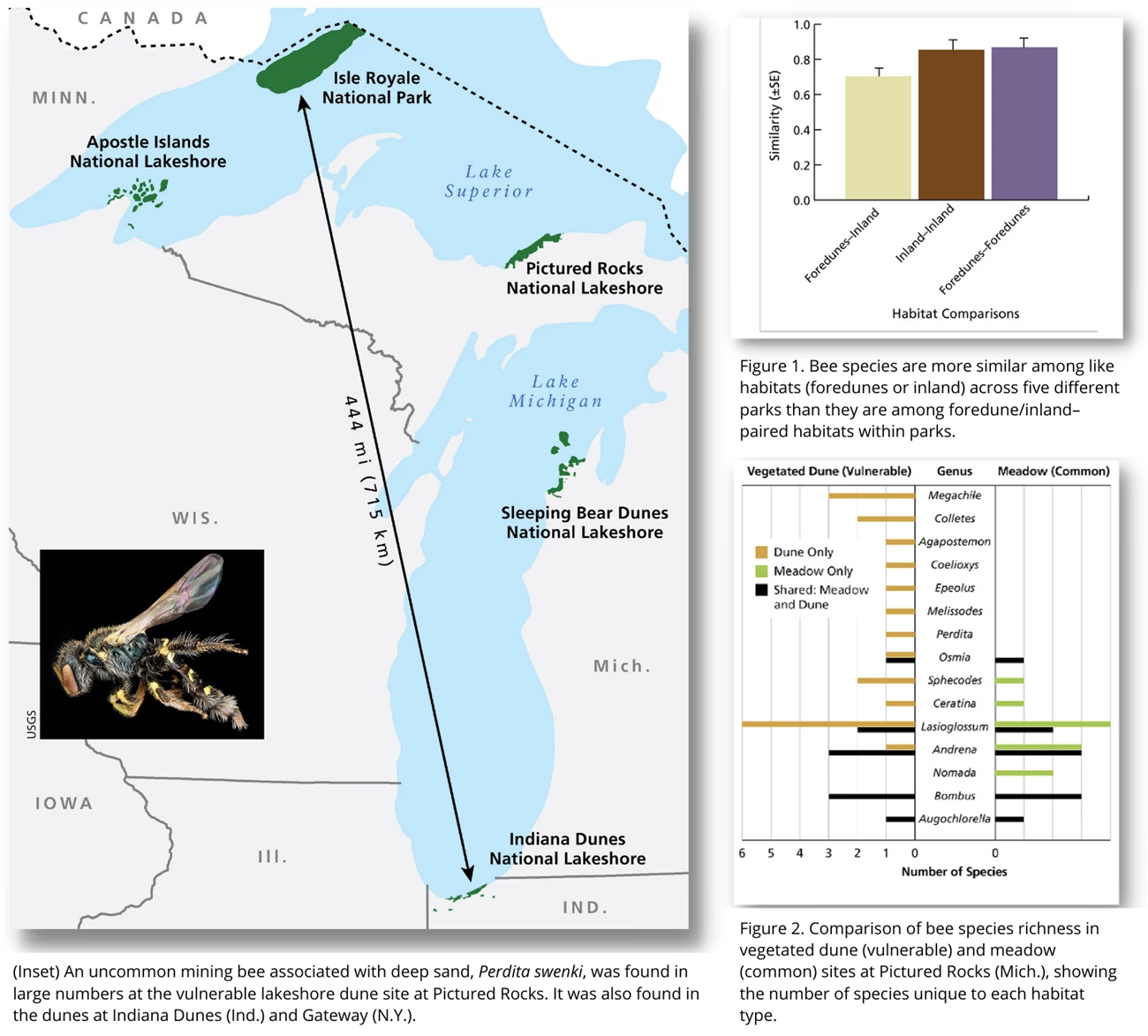Last updated: July 7, 2022
Article
Great Lakes Pollinators
By Jessica Rykken, Ann Rodman, Sam Droege, and Ralph Grundel

NPS photo
Around the western Great Lakes, bees were sampled at five parks (see map) in paired foredune and inland habitats. The two habitats were compared within and between parks (photo, at left). Dune ecosystems are often restricted to a narrow zone near the Great Lakes, and we might expect that species inhabiting such restricted habitats are more vulnerable to extirpation from changing climate than bees in more common inland habitats.
Although parks in this region are separated by up to 715 km (444 mi), a site in one of the habitat types (dune or inland) shared more bee species with like habitats across parks than it did with its paired (different) habitat within the same park (fig. 1). The marked difference between dune and inland bee communities suggests that forces of environmental change differentially affecting habitat types across this region will act on different sets of pollinators (fig. 2).

Caption for top right image: Figure 1. Bee species are more similar among like habitats (foredunes or inland) across five different parks than they are among foredune/inland–paired habitats within parks.
Caption for bottom right image: Figure 2. Comparison of bee species richness in vegetated dune (vulnerable) and meadow (common) sites at Pictured Rocks (Mich.), showing the number of species unique to each habitat type.
About the authors
Jessica Rykken (jrykken@oeb.harvard.edu) is an associate with the Farrell Lab, Harvard University Museum of Comparative Zoology, in Cambridge, Massachusetts.
Ann Rodman (ann_rodman@nps.gov) is branch chief for Physical Resources and Climate Science at Yellowstone National Park, Wyoming.
Sam Droege (sdroege @usgs.gov) is a research wildlife biologist with the USGS Patuxent Wildlife Research Center in Beltsville, Maryland.
Ralph Grundel (rgrundel@usgs.gov) is a research ecologist with the USGS Great Lakes Science Center in Porter, Indiana.
